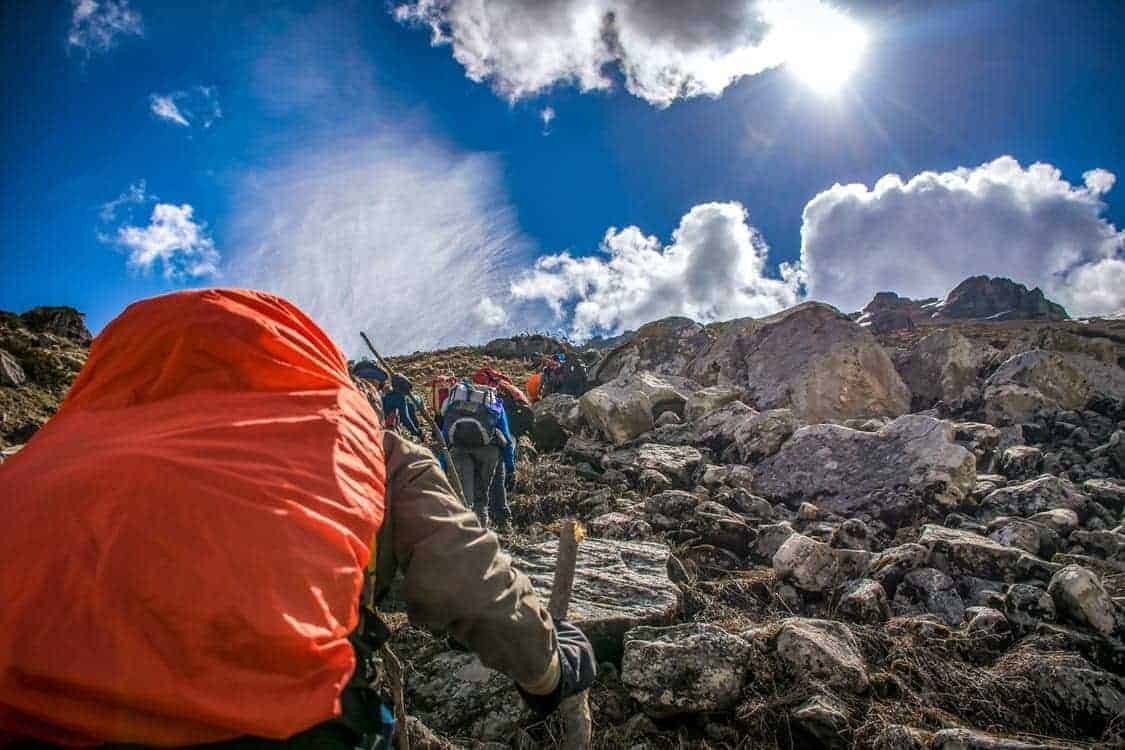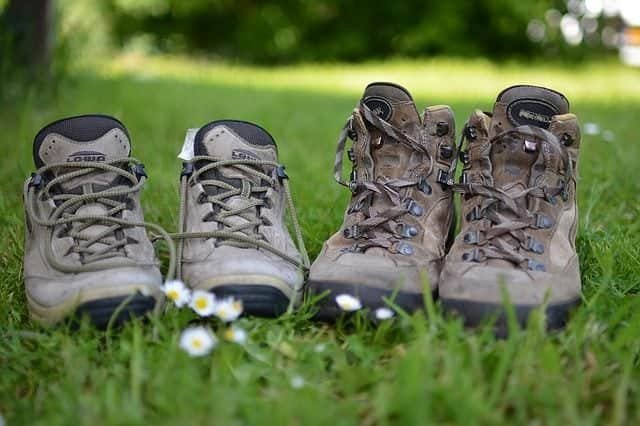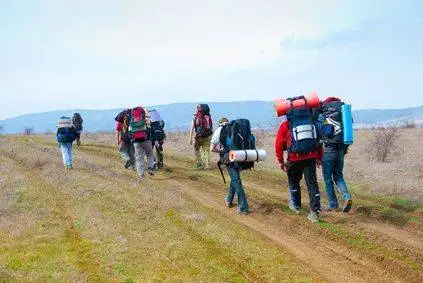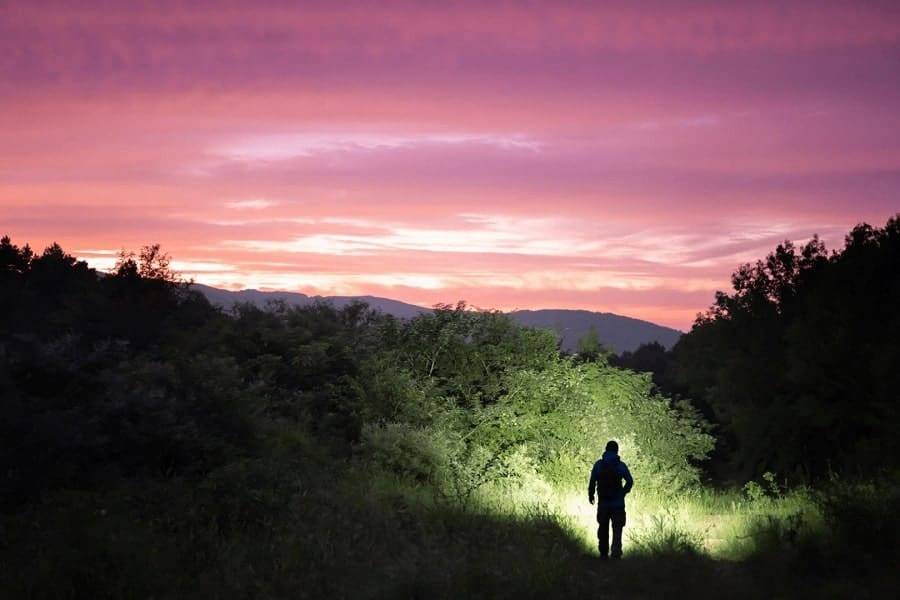Hiking is life. There’s nothing like climbing a mountain, walking a trail, or doing whatever ambulatory activity it requires to complete a hike. The thrill, the challenge, the nature, and the oft-incredible views are all well worth the effort.
However, that doesn’t mean hiking is a riskless activity. The outdoor sport opens up a plethora of different challenges, difficulties, and dangers for new and experienced hikers alike.
Here are some of the most common hiking injuries that everyone should look out for, as well as recommendations for how to head them off at the pass.
Common Hiking Injuries and Solutions

Image Source: Pexels
Below are some of the most common issues that can arise when hiking. Each item describes the problem and provides suggestions for how you can guard against it so that it doesn’t hamper your next trip.
Blisters, Cuts, and Bruises
One of the first hiking injuries that come to mind is the classic blister. This is an easy one to prevent or at least minimize.
Start by ensuring you have shoes that fit you really well. Take the time to ask the right questions when purchasing your boots. Measure your feet both sitting and standing and consider your foot length and width as well as your arch length. This can help you get boots that fit well and have the right support. In addition, take the time to break in your boots before you tackle any trails.
Along with blisters, cuts and bruises are common. Of course, many of these can be avoided by simply watching your step. However, you can also reduce the number of nicks and scratches you receive by wearing tall socks and thick pants that overlap well with your boots.
Sprains and Twisted Ankles
Sprains and twisted ankles are also common injuries. While it’s difficult to fully prevent this kind of injury, there are still actions you can take to lower the risk of them taking place.
Wearing the right boots is a good start, as it gives you a sure footing. In addition, consider using a walking stick to stabilize your step. If, in spite of your caution, you do hurt yourself, make sure to have a quality first aid kit ready to help you wrap up your injury.
Leg and Back Pains
It’s common to experience leg strains and back pains when hiking. All the bumpy terrain can do a number on even the strongest back and spending all day clambering up a steep trail can exhaust your lower appendages.
If you want to prevent pains like these from seriously impeding your ability to hike a trail, there are a few prevention measures that you can take. Start by stretching really well beforehand. In addition, keep your pack as light as possible and consider visiting a chiropractor in between trips to keep yourself aligned.
Dehydration
Dehydration is another injury that can quietly creep up on you while you’re on the trail. Prevention is very important in this case. Bring a quality water bottle that is as big as is reasonably possible.
If you won’t be near water for an extended period of time, consider purchasing a LifeStraw or Aquastiq to purify water on the go as well. Even if you aren’t going to be purposefully distant from civilization for too long, it never hurts to have a nifty tool like this available just in case of an emergency.
Sunburn
Sunburn is extremely common when hiking. Avid hikers often feel impervious to the outdoor weather. However, nature can be harsh in spite of the breathtaking view it so often offers.
If you’re going to be out in the sun for a long hike, you must wear sunscreen on any exposed areas of your skin. In addition, set a timer on your phone to remind you to reapply the lotion when it wears off.
If the sun is a concern, it’s also a good idea to wear UV-blocking sunglasses or contact lenses to shield your eyes along with your skin.
Bug Bites
Much like sunburn, bug bites are another hazard of any hiking environment. Pesky bugs like ticks and mosquitoes can carry disease and you don’t want to be slapping yourself every few steps in an attempt to fend them off.
Take a two-fold approach to resisting these tiny intruders. Start by covering as much of your skin as possible. Unless it’s a hot day, pants and long-sleeve shirts are always a good idea, anyway. In addition, load up with a good bug spray to help reduce your appeal and keep the number of bites to a minimum.
Hypothermia and Hyperthermia
The possibility of temperature-related illnesses is a very real threat not just with hiking but with many intense, time-consuming outdoor activities. It’s important that you take serious steps to prevent either hypothermia (excessively low body temperature) or hyperthermia (excessively high body temperature).
Hypothermia can be prevented by staying dry, wearing an appropriate amount of warm, waterproof clothing, bringing a hot drink in a thermos, and having a spare blanket or emergency tarp ready to go.
Hyperthermia can be prevented by drinking plenty of water, wearing a hat, and hiking during cooler times of the day. In addition, be ready to pause your trip and sit in some shade if you’re feeling overheated.
Nausea, Constipation, and Diarrhea
Feeling sick to your stomach is another common side effect of a hike. There are countless reasons that this could happen, many of which relate to either dehydration or bacterial infection.
You can avoid the need to muscle through sickness by using hand sanitizer and washing carefully and thoroughly throughout your trip. Also, stay hydrated and try to eat trail food that doesn’t upset your stomach or your gastrointestinal tract.
Allergies
Finally, there are countless allergies you can face while in the great outdoors. The best way to prevent any issues caused by an allergic reaction is to go into the adventure well informed.
Make sure you’re aware of any and every dangerous form of vegetation you could face. In addition, wear those long pants, tall socks, a hat, and long sleeves whenever you can, and take allergy medication if you need it.
Why You Need to Keep Hiking
After listing so many hiking-related things to be worried about, it only feels right to wrap things up with a quick stroll through some of the reasons why we hike. Here are some of the best benefits that come from hiking — use them to inspire you and remind you that, even with the risks involved, a good hike is always worth the effort.
Hiking keeps you physically healthy: From toned muscles to stronger veins, there are many physical benefits that come from hiking.
Hiking improves your mental health: Nature is a natural mood-booster that can reduce stress, lower anxiety, relieve depression, and help you live in the moment.
Hiking helps improve your relationships: Hiking with friends and family provides a healthy, outdoor, unplugged adventure that you can bond over.
It doesn’t matter if you’re thinking of your body, mind, or emotions. Hiking has got you covered.
Finding the Ultimate Pleasure in Hiking
There are many dangers you can face while out on a hike. However, if you take the time to prepare proper precautions, these can all be either minimized or avoided entirely, leaving you with an enjoyable and wholesome experience worth indulging in over and over again.
Author Bio:

Contributor: Luke Smith
Words about contributor of this Article: “Luke Smith is a writer and researcher turned blogger. Since finishing college he is trying his hand at being a freelance writer. He enjoys writing on a variety of topics but lifestyle and outdoor topics are his favorite. When he isn’t writing you can find him traveling, hiking, or gaming.“
Disclaimer
All the information displayed in this article is in good faith and is exclusively meant for educational purposes. Under no circumstances should the images, graphics, texts, and other materials created by this article be perceived as medical treatment, diagnosis, or instruction.
In the event of a medical emergency, contact the nearest medical facility for assistance. Do we or the author neither endorse nor recommend any particular claims, opinions, procedures, or products highlighted directly on the site or through links to an external website.




